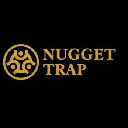-
 bitcoin
bitcoin $114684.631706 USD
-0.87% -
 ethereum
ethereum $4228.677447 USD
1.58% -
 bnb
bnb $1294.880693 USD
-1.16% -
 tether
tether $1.000819 USD
-0.02% -
 xrp
xrp $2.605138 USD
2.79% -
 solana
solana $209.908690 USD
5.89% -
 usd-coin
usd-coin $0.999903 USD
-0.03% -
 dogecoin
dogecoin $0.213423 USD
2.93% -
 tron
tron $0.322721 USD
-0.10% -
 cardano
cardano $0.727247 USD
3.66% -
 hyperliquid
hyperliquid $42.339456 USD
6.05% -
 chainlink
chainlink $19.910811 USD
5.16% -
 ethena-usde
ethena-usde $1.000557 USD
0.00% -
 stellar
stellar $0.349734 USD
2.69% -
 bitcoin-cash
bitcoin-cash $543.848687 USD
-0.21%
Coin circle money making model
Cryptocurrencies offer several money-making models, including trading, staking, lending, yield farming, Bitcoin mining, altcoin mining, and airdrops/bounties, each with its own potential return and risk profile.
Jan 07, 2025 at 09:56 pm

- Trading: Buying and selling cryptocurrencies on exchanges to profit from price fluctuations.
- Staking: Holding cryptocurrencies in a wallet or network to earn rewards for validating transactions.
- Lending: Loaning cryptocurrencies to others to earn interest.
- Yield Farming: Providing liquidity to decentralized exchanges and earning rewards in the form of tokens.
- Bitcoin Mining: Validating Bitcoin transactions and earning block rewards.
- Altcoin Mining: Validating transactions on other blockchains and earning rewards in altcoins.
- Air Drops and Bounties: Receiving free tokens or coins by participating in marketing or community-building activities.
- Involves buying and selling cryptocurrencies on centralized or decentralized exchanges.
- Profits are generated by buying low and selling high, taking advantage of price volatility.
- Requires technical and fundamental analysis skills to identify profitable trading opportunities.
- Can be a high-risk strategy, especially for inexperienced traders.
- Holding cryptocurrencies in a wallet or on a network that supports staking.
- Rewards are earned for validating transactions on the blockchain.
- Earnings vary depending on the coin or token and the size of the stake.
- Generally a low-risk strategy, suitable for long-term investors with significant holdings.
- Loaning cryptocurrencies to others through platforms or decentralized finance (DeFi) protocols.
- Interest payments are earned on the loaned assets.
- Interest rates vary depending on the demand for loans and the borrower's creditworthiness.
- Can be a passive income source, but comes with the risk of loan default and market fluctuations.
- Providing liquidity to decentralized exchanges by depositing cryptocurrencies into liquidity pools.
- Earn rewards in the form of tokens or fees.
- High earnings potential, but also carries risks associated with impermanent loss (loss due to pool imbalances).
- Requires understanding of DeFi protocols and constant monitoring.
- Validating Bitcoin transactions on the blockchain.
- Block rewards are earned for successfully mining a block.
- Requires specialized mining equipment (ASICs) and access to cheap electricity.
- High investment costs and high energy consumption.
- Similar to Bitcoin mining, but involves validating transactions on other blockchains.
- Different altcoins may use different mining algorithms and reward systems.
- Less competition and lower investment costs compared to Bitcoin mining, but less stable rewards.
- Participating in marketing or community-building activities to receive free tokens or coins.
- Typically involve completing tasks such as following social media accounts, signing up for newsletters, or referring new users.
- Can be a low-risk way to earn small amounts of free cryptocurrencies.
- Which is the most profitable money-making model? The profitability of different models varies and depends on factors such as market conditions, individual skills, and investment capital.
- How much can I earn? Earnings from each model depend on factors such as market performance, stake size, loan amounts, liquidity pool size, mining efficiency, and airdrop or bounty participation.
- Is it too late to make money in the crypto market? The cryptocurrency market is still in its early stages and there is ample opportunity for earning, although it comes with risks.
- Where can I learn more about these money-making models? Online resources, books, and educational platforms provide information on crypto trading, staking, lending, and other money-making models.
Disclaimer:info@kdj.com
The information provided is not trading advice. kdj.com does not assume any responsibility for any investments made based on the information provided in this article. Cryptocurrencies are highly volatile and it is highly recommended that you invest with caution after thorough research!
If you believe that the content used on this website infringes your copyright, please contact us immediately (info@kdj.com) and we will delete it promptly.
- XRP Price Prediction: Weekend Rollercoaster or Rally?
- 2025-10-12 08:45:16
- Bittensor (TAO): Super Bullish Signals Point to Potential 2x Rally
- 2025-10-11 10:25:12
- Silver Price Correction: Navigating the Dip & Identifying Key SEO Keywords
- 2025-10-11 10:25:12
- Decoding Crypto Trends: Bittensor's Bull Run, Cardano's Dip, and LivLive's Presale Buzz in 'Uptober 2025'
- 2025-10-12 08:45:16
- MoonBull: The Crypto Meme Coin Promising 1000x Gains?
- 2025-10-11 10:30:01
- Crypto Payroll Revolution: Stablecoins, Altcoins, and the Future of Salary Payments
- 2025-10-11 10:30:01
Related knowledge

Practical parameter settings for a Bitcoin multi-timeframe moving average system
Sep 18,2025 at 10:54pm
Optimizing Timeframe Combinations for Bitcoin Trading1. Selecting appropriate timeframes is crucial when building a multi-timeframe moving average sys...

How can I filter out false breakouts in Dogecoin high-frequency trading?
Sep 22,2025 at 01:00am
Understanding False Breakouts in Dogecoin Trading1. A false breakout occurs when Dogecoin's price appears to move beyond a defined support or resistan...

Techniques for identifying tops and bottoms in the Bitcoin on-chain NVT model
Sep 20,2025 at 07:54pm
Understanding the NVT Model in Bitcoin Analysis1. The Network Value to Transactions (NVT) ratio is often described as the 'P/E ratio' of the cryptocur...

What does the surge in open interest in Bitcoincoin futures mean?
Sep 20,2025 at 11:18pm
Understanding the Surge in Dogecoin Futures Open Interest1. A surge in open interest within Dogecoin futures indicates a growing number of active cont...

How can I use the Ethereum USDT premium to gauge market sentiment?
Sep 18,2025 at 11:55pm
Understanding the Ethereum USDT Premium1. The Ethereum USDT premium refers to the price difference between USDT (Tether) traded on Ethereum-based plat...

What should I do if Ethereum staking yields decline?
Sep 20,2025 at 06:18am
Understanding the Causes Behind Declining Ethereum Staking Yields1. The Ethereum network transitioned to a proof-of-stake consensus mechanism with the...

Practical parameter settings for a Bitcoin multi-timeframe moving average system
Sep 18,2025 at 10:54pm
Optimizing Timeframe Combinations for Bitcoin Trading1. Selecting appropriate timeframes is crucial when building a multi-timeframe moving average sys...

How can I filter out false breakouts in Dogecoin high-frequency trading?
Sep 22,2025 at 01:00am
Understanding False Breakouts in Dogecoin Trading1. A false breakout occurs when Dogecoin's price appears to move beyond a defined support or resistan...

Techniques for identifying tops and bottoms in the Bitcoin on-chain NVT model
Sep 20,2025 at 07:54pm
Understanding the NVT Model in Bitcoin Analysis1. The Network Value to Transactions (NVT) ratio is often described as the 'P/E ratio' of the cryptocur...

What does the surge in open interest in Bitcoincoin futures mean?
Sep 20,2025 at 11:18pm
Understanding the Surge in Dogecoin Futures Open Interest1. A surge in open interest within Dogecoin futures indicates a growing number of active cont...

How can I use the Ethereum USDT premium to gauge market sentiment?
Sep 18,2025 at 11:55pm
Understanding the Ethereum USDT Premium1. The Ethereum USDT premium refers to the price difference between USDT (Tether) traded on Ethereum-based plat...

What should I do if Ethereum staking yields decline?
Sep 20,2025 at 06:18am
Understanding the Causes Behind Declining Ethereum Staking Yields1. The Ethereum network transitioned to a proof-of-stake consensus mechanism with the...
See all articles










































































